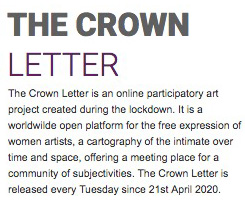MARCH 15 TO MARCH 22
STOP INVASION OF UKRAINE
March 15 to March 22
Taia Galagan-Gershuni

Anne Dubos

Ruth Maclennan

We walked up the hill to Maximilian Voloshin’s grave above Koktebel. A great walk to the view – where Max V would light a fire on his way home from the gymnasium in Feodosia to Koktebel and his mother would see it and prepare for his arrival. People bring pebbles from the beach to lay on his tombstone; sometimes they write on them or leave money. Then we walked back down, tasting caperberries growing in the long grass. We walked to the Dead Bay, next to the Quiet Bay. We ran into the family we’d met on the walk up, at the beach. N and A and the twin boys. We swam in the sun and moonlight, spread the soft, black, sulfuric magic mud all over our bodies and floated in the warm still water. We then all squeezed in to the car to drive home for tea, champagne and melon. The boys played chess and understood each other fine. We spent several happy days together with the family we met on the walk. They rescued us from a place with twenty cats and no hot water. We stayed with them in Theodosia, and the boys played chess and ran around shouting together. Now please come and stay with us!
Manuela Morgaine

Motanka dolls appeared in Ukraine five thousand years ago. Our Ancestors believed that natural threads and materials used to create these dolls are magical and protect family from evil spirits and tragedy: hay, straw, wood, herbs, dry leaves, grains, seeds, filled with fragrant herbs. The doll is an amulet, so it cannot have a human appearance. Empty face. Having no face, it is endowed with all physical existence and therefore it cannot cause misfortune. According to beliefs, people who added eyes, lips or nose to a Motanka would die with it, as their soul moved within the doll. Motanka is above all a protector of children.
Valeria Troubina

I painted this work in 2014, just after arriving in Kiev from Lugansk after the war in Donbass… This is the story. When my mother and I were sitting there during the bombing, without light or water or anything else, we had to prepare food over a fire, and I started the fire by burning old books (we had plenty!). One of the ones I came across was The Collected Works of Stalin, full of lies and propaganda about how to control people and the country… I burned it as a sign of protest… and photographed it as it burned! Later I painted this enormous work, 2 m x 3 m, and exhibited it in 2016…This photograph is from that exhibition. I am crying as I write this. At the time the image didn’t resonate as it should have… but I felt that it wasn’t the end of the matter… in Ukraine not everyone understood what had actually been going on.
Katja Stuke

Claire-Jeanne Jézéquel

